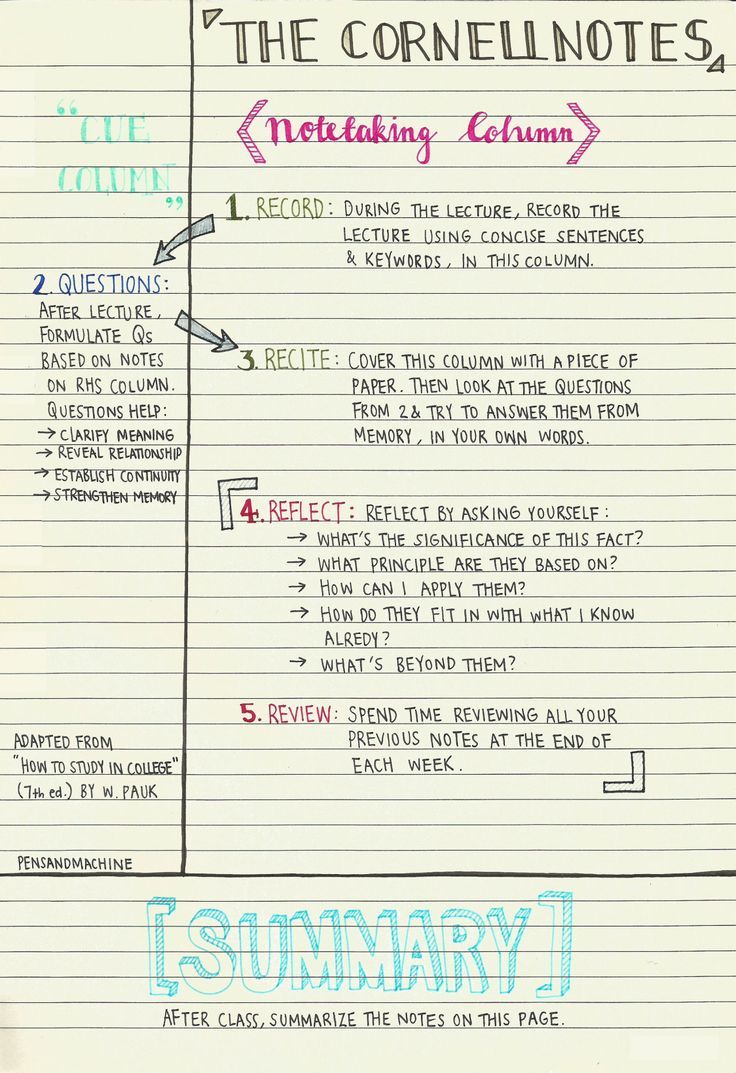What are the 5 R's in note-taking?
There are many ways to take notes, and everyone seems to have their preference when it comes to note-taking. Many methods involve some or all of the 5 R's of note-taking: record, reduce, recite, reflect, and review.
Five primary methods of note-taking: charts, lists, outlines, concept maps, and the Cornell method.
A blank Cornell notes template for the famous note-taking method invented by Professor Walter Pauk in the 1940s. The Cornell notes paper is divided into two columns, one on the right for note-taking and one on the left for questions/key points. The bottom of the page is reserved for the summary. Dimensions: 8.5 x 11 inches.
Note-Taking Area: Record the lecture as fully and as meaningfully as possible.
Cue Column: As you’re taking notes, keep the cue column empty. Soon after the lecture, reduce your notes to concise jottings as clues for Reciting, Reviewing, and Reflecting.
Summaries: Sum up each page of your notes in a sentence or two.
This format provides the perfect opportunity for following through with the 5 R’s of note-taking:
Record
During the lecture, record in the main column as many meaningful facts and ideas as you can. Write legibly.
Reduce
As soon as possible, summarize these facts and ideas concisely in the Cue Column. Summarizing clarifies meanings and relationships, reinforces continuity, and strengthens memory.
Recite
Cover the Note-Taking Area, using only your jottings in the Cue Column, say over the facts and ideas of the lecture as fully as you can, not mechanically, but in your own words. Then, verify what you have said.
Reflect
Draw out opinions from your notes and use them as a starting point for your own reflections on the course and how it relates to your other courses. Reflection will help prevent ideas from being inert and soon forgotten.
Review
Spend 10 minutes every week in a quick review of your notes, and you will retain most of what you have learned.
Adapted from How to Study in College 7/e by Walter Pauk, 2001 Houghton Mifflin Company
What is a note-taker called?
A stenographer is an amanuensis. Anyone who can copy or write down what someone else is saying is considered an amanuensis. So if you've ever taken good notes in class, then you're an amanuensis!



